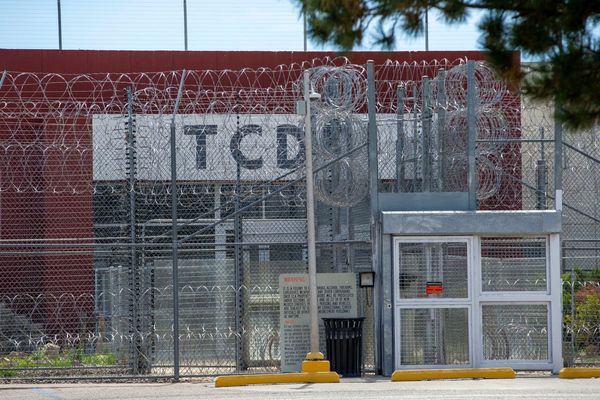
The first commercial airliners to set down at Beijing Daxing International Airport belonged to four of China’s top airlines: Air China, China Southern, China Eastern and Xiamen Airlines.
The landing of the four initial test flights to the Chinese capital’s enormous new $12 billion airport on the same day — May 13 — might have been intended to signal a new era of access for the country’s major airlines in Beijing. However, the event, widely covered in state media, belied the long-held dominance in the capital of the country’s flag carrier, Air China, over its rivals China Eastern and China Southern.
The three airlines, which together carried two-thirds of China’s commercial passengers in 2018, have long jostled for space at the city’s other mega-airport, Beijing Capital International Airport. However, China Eastern and China Southern’s ambitions have always been stymied by one of the industry’s unspoken rules: Beijing-based Air China takes priority in the routes assigned at Beijing Capital, one of the world’s busiest airports. For their part, Shanghai-based China Eastern and Guangzhou-based China Southern are the main players in their respective hometowns.
Daxing, set to be one of the world’s largest airports when it opens in September, offers a make-or-break opportunity for China Southern Airlines Co. Ltd. and China Eastern Airlines Corp. Ltd. to shatter Air China Ltd.’s long time monopoly in lucrative market for air travel in China’s capital, market analysts said.
Eyes on the prize
Daxing is located 46 kilometers (28.6 miles) south of the city center, considerably farther than Beijing Capital, which is about 25 kilometers northeast of downtown. Last year, Beijing Capital became the world’s second busiest airport, behind only Hartsfield-Jackson Atlanta International Airport of the U.S.
Construction started on Daxing in 2014. The airport, which will have seven runways, is being built to take some of the pressure off the overstretched Beijing Capital, which saw about 94 million passengers pass through in 2016, even though it was only designed to handle 82 million a year.
Daxing was designed to handle 100 million passengers annually by 2040, which will be its 20th year of operation. It took 60 years for Beijing Capital to reach the same milestone.
China is on track to become the world’s largest aviation market. It aims to boost its air passenger traffic by 11% this year and is slated to invest more than $10 billion into infrastructure.

Domestic airlines want to take advantage of the new infrastructure. “China Southern is probably the most eager to tap Daxing,” said an industry source who preferred not to be named.
The source said China Southern had created a team to outline an operational strategy for the airport as early as 2013. In June 2018, it announced it would invest 10 billion yuan ($1.45 billion) in a new airline, Xiongan Airlines Co. Ltd., which will operate out of Daxing as part of China Southern’s “dual hub” strategy for Beijing.
The moves underline China Southern’s interest in the new airport after several unsuccessful attempts to expand its business in Beijing. For example, after purchasing China’s first batch of Airbus A380 wide-body airliners, China Southern had lobbied the airlines’ regulator, the Civil Aviation Administration of China (CAAC), for the rights to operate long-haul flights out of Beijing Capital. However, the CAAC refused the request because Air China opposed it, said one aviation analyst who requested anonymity.
How Airlines Jostle for Popular International Routes
The double-decker Airbus 380 is the world’s largest jetliner and is designed specifically for long-haul flights — a single trip of more than 4,500 kilometers.
The rejection was in part due to a regulation that didn’t allow more than one airline to operate the same long-haul route in an effort to prevent competition from growing to fierce. For instance, Air China had been the sole operator of the lucrative Beijing-Los Angeles route for many years, until the CAAC relaxed the rule last year to permit a second airline to fly the same route.
Because A380s cost so much more to run than smaller aircraft, airlines need fuller cabins and higher ticket prices to ensure their long-haul flights turn a profit. As a major transportation hub and a destination for political and business meetings, Beijing is a prime location to run long-haul route from — provided that an airline can get a spot there. China Southern has never been able to get one. It only operates A380s on three routes: Guangzhou-Beijing, Beijing-Shenzhen, and Guangzhou-Los Angeles, the last of which is its only long-haul route, according to the airline’s website.
Its fleet of A380s, which began flying in 2011, only turned a profit for the airline in 2016.
Everybody wants in
The inaccessibility of Beijing’s market has been especially vexing to Shanghai-based China Eastern, whose hometown has been much more accommodating to the airline’s competition.
“In Shanghai, the airspace is more open … and that’s why Air China has some good routes there,” said a China Eastern employee who requested not to be named as the information was sensitive. “However, China Eastern hasn’t received the same treatment in Beijing.”
Daxing will help even things out. In January, the CAAC directed China Eastern and China Southern to relocate all of their Beijing flights to Daxing, allocating each airline 40% of the takeoff and landing slots at the new airport. Air China was initially asked to keep running all of its flights out of Beijing Capital.
That plans was adjusted in April, however, when the CAAC decided that China Eastern could keep its Beijing-Shanghai route at the Beijing Capital, and Air China should get 10% of the takeoff and landing slots that it had allocated to China Eastern.
The change was considered a “win-win” for the two airlines, according to an April note by Industrial Securities. The Shanghai-Beijing Capital route is China Eastern’s most profitable and moving it to Daxing would have caused it to lose out to its competitors, the brokerage’s analysts said.
Daxing may only gain importance in the distant future, though its strategic location is something that the airline shouldn’t overlook. The new airport is closer to Xiongan New Area, a government-planned high-tech industrial hub intended to take some of the pressure off the capital.
While local airlines are jostling for their respective runways, foreign airlines are free to choose whether to land in Daxing or Beijing Capital, the CAAC said earlier this year.
Contact reporter Jason Tan (jasontan@caixin.com)







